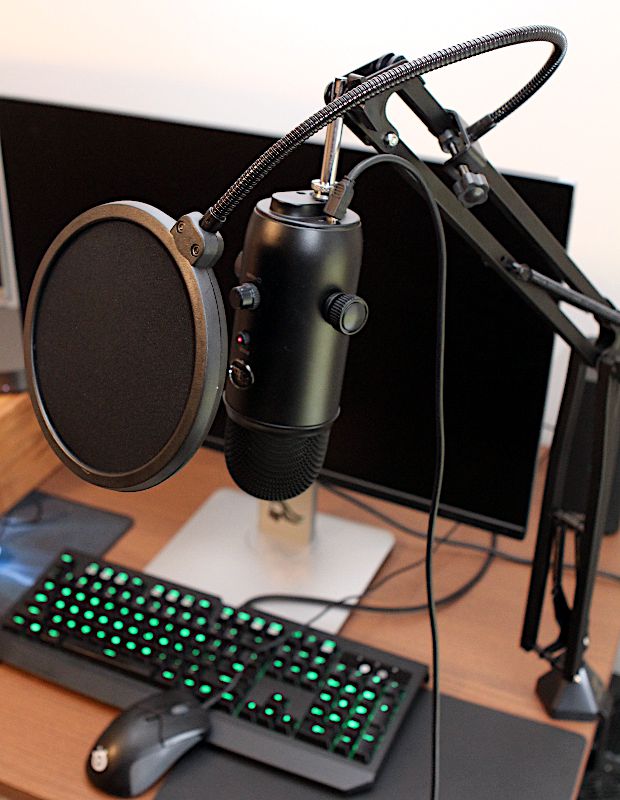
REVIEW – When recording, streaming, or gaming, it’s important to have a good microphone, one that can clearly capture your voice. Most mics come with a short stand that takes up precious space on your desk and positions the mic closer to your keyboard, a source of unwanted ambient noise, than to your voice. Both of these problems can be solved by using a different type of mic stand, one like TONOR’s T20.
What is it?
The TONOR T20 is a suspension boom arm microphone stand that mounts to your desk and re-positions your mic so that it hangs in the air near your voice.
What’s in the box?
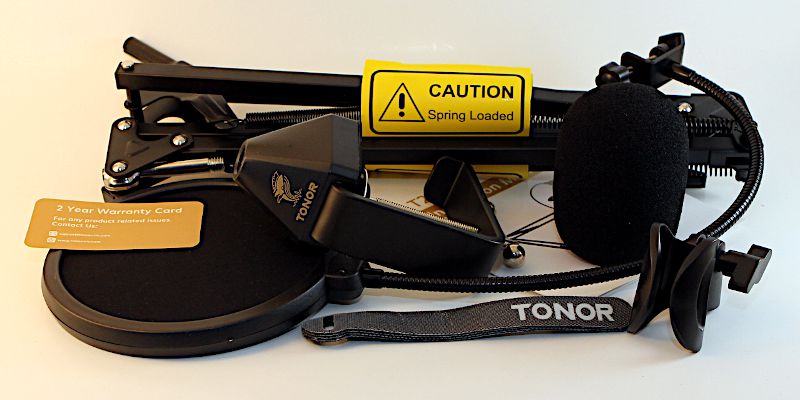
- A boom arm
- A desk clamp
- A mic clip
- 3/8-inch female to 5/8-inch male thread adapter
- A detachable pop filter
- A foam cover
- Four cable ties
- A two-page instruction card
- Warranty card
Hardware specs
- Material: Steel
- Weight: 1.8 pounds
- Max mic weight: 4 pounds
- Max arm height: 27.5 inches
- Max desk thickness: 2.4 inches
- Attachment thread: 3/8 inch (5/8 with adapter)
- Base rotation: 360 degrees
Design and features
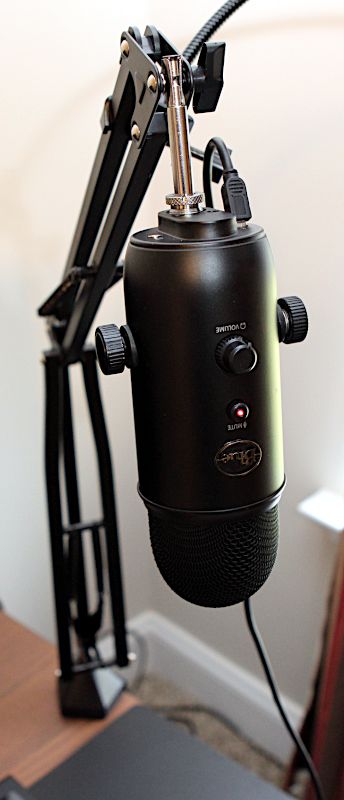
The T20 is a fairly standard design for boom arm mic stands. The base clamps to your desk. The boom arm has two sections that can be adjusted to position your mic where you want it. The arm rods are made of steel, and everything is colored black.
Installation and setup
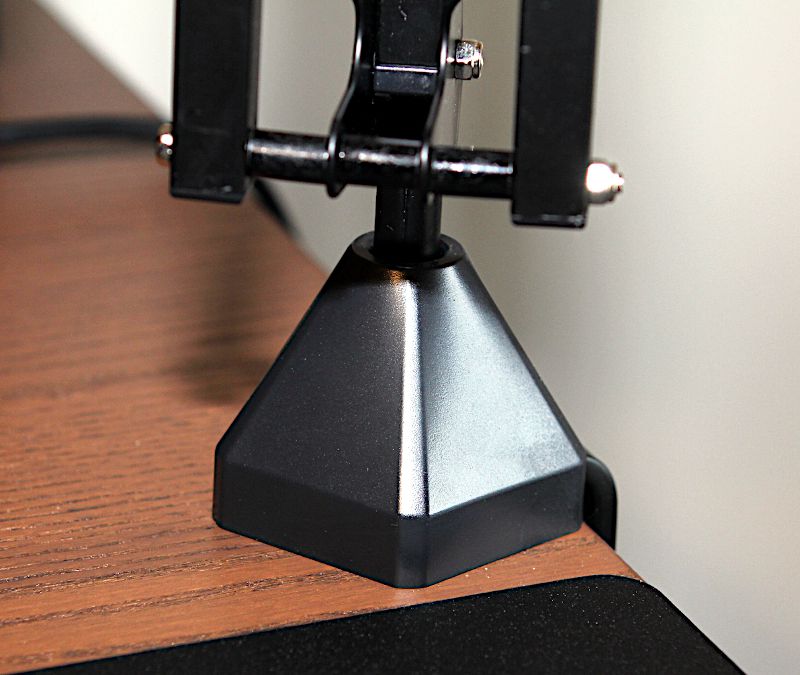
The first step was to clamp the base to my desk. The base is shaped like a pentagon and is nearly 3 inches across, which provides a good amount of surface area and thus a stable platform for the arm. The bottom of the base is rubber, which will reduce vibration noise from the desk and protect my desk at the same time. The entire clamping mechanism seems super strong to me, and I don’t have any problem believing TONOR’s claim that it can support even heavy mics.
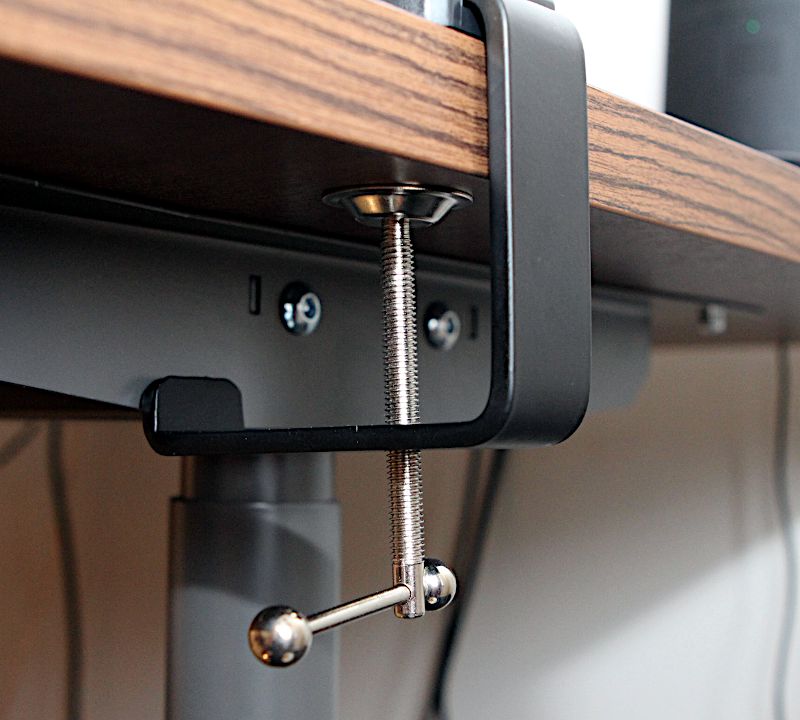
The metal rod that connects the base to the clamp extends an extra two inches under my desk; it’s intended to hold my headphones out of my way when they are not in use, although unfortunately the cable management system under my IDÅSEN blocks it.
When placing the base, I had to decide whether to attach it at the back of my desk or the side. As my desk is deep (31.5 inches) and my monitor is tall (21 inches tall without a stand), I can’t really connect it to the back. It would be too far way, and it wouldn’t reach over the top of my 27-inch Dell monitor. I settled for attaching it to the right side of my desk, about 13 inches back from front-right corner, which put it just behind my Corsair gaming mousepad.
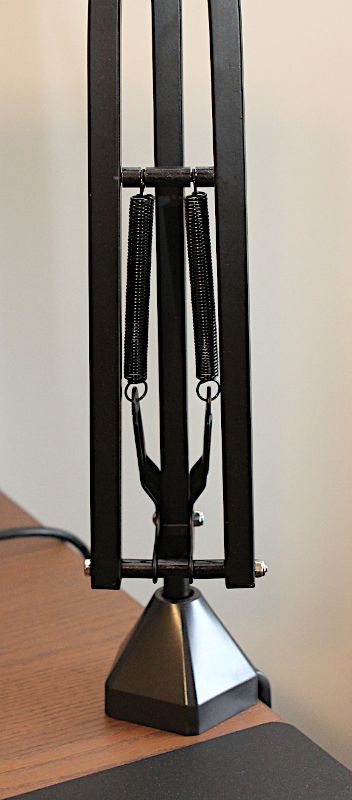
The second step was to attach the arm to the base. The arm has a cylindrical metal round that slips down into the base. The lower section of the arm has three steel rods instead of the two rods that most arms have, while the upper section has two. TONOR says that they are made high-quality and durable steel, and they certainly seem plenty strong to me.
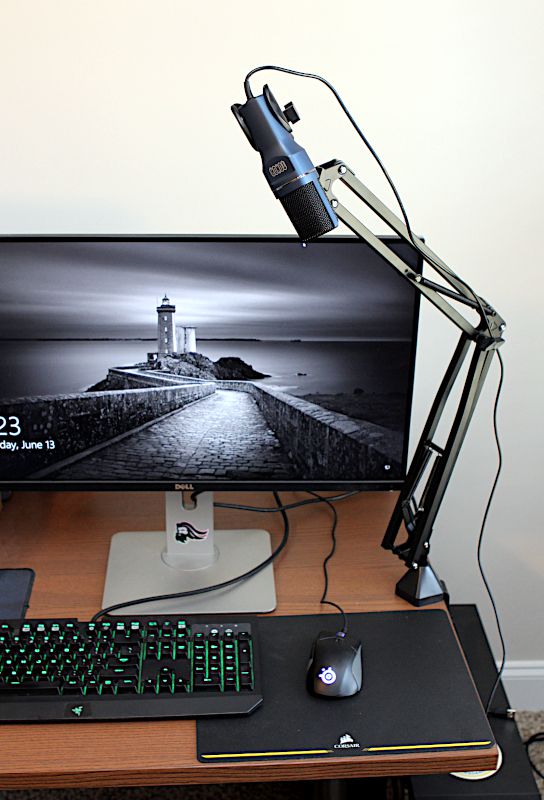
The third step was to attach the mic to the arm. I tested the T20 with two different mics, first with TONOR’s TC-777 — you can read my review of it here — and then with a Blue Yeti. The TC-777 doesn’t have any mechanism for connecting to a boom arm, so I screwed the adapter into the included mic clip and then screwed the adapter onto the threaded end at the top of the arm. As I tried to slip the mic into the mic clip, I encountered a bit of a problem: the mic clip is designed for a cylindrical mic, but the body of the TC-777 is rectangular. I can force it, but it’s a bit awkward, the proverbial square peg in a round hole. I noticed that the screw and nut that holds the mic clip in place was the same size as the one that holds the shock mount in place on the stand of the TC-777. I unscrewed both, but when I tried to connect the shock mount to the clip, the holes wouldn’t line up; they just aren’t compatible. Clearly (and rather surprisingly) the TC-777 was not designed to be used with the T20; I like the TC-777 and the TC20, but until TONOR designs a new mic clip, I don’t recommend using them together.
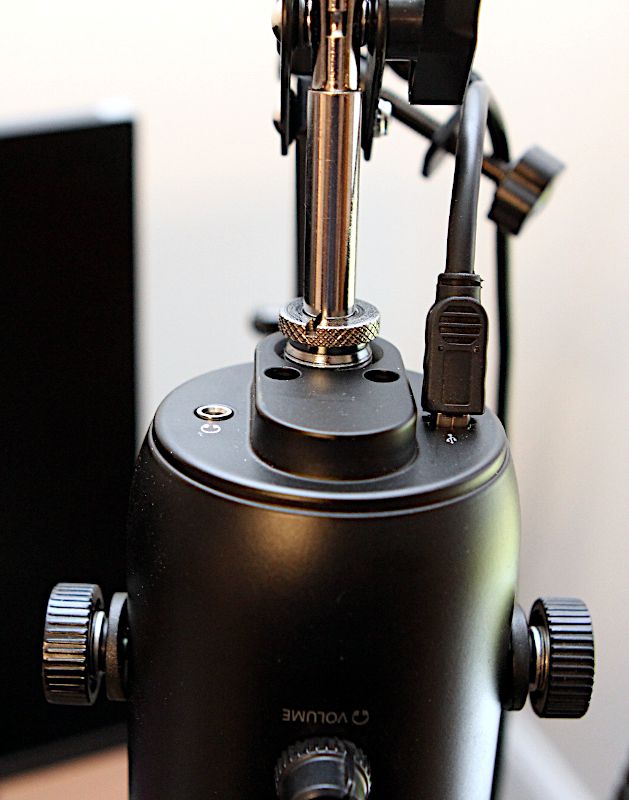
The Blue Yeti was a different story. I screwed the adapter into the base of the Yeti, after applying a bit of WD-40, and then screwed onto the top of the arm. I reversed it so that the Yeti hung upside down, and it was ready to go. Although it’s substantially bigger and heavier than the TC-777, the TC20 had no problem holding it in place. I also attached the pop filter, which measures 6 inches in diameter.
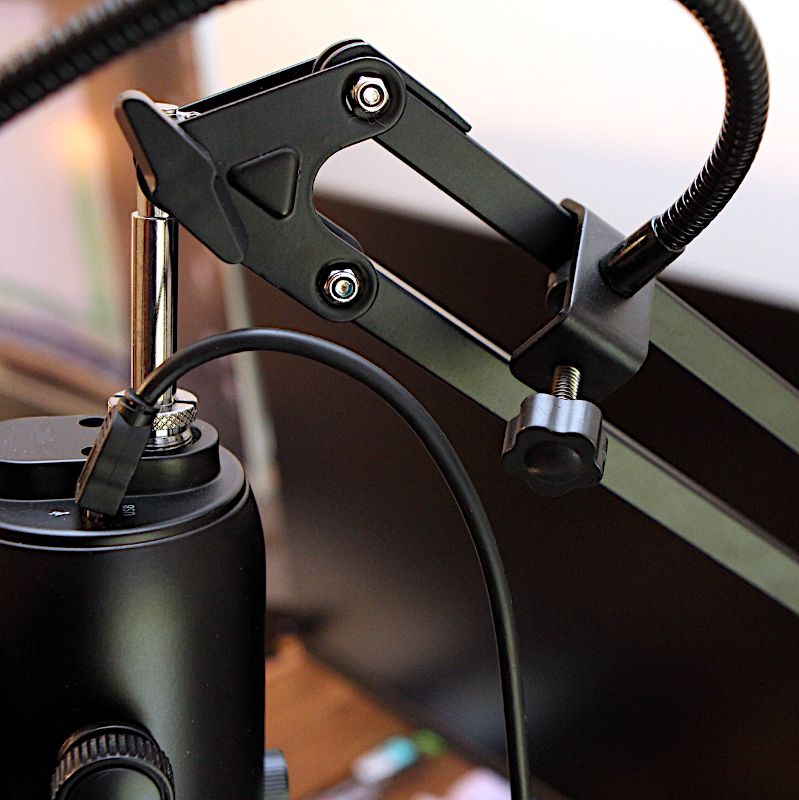
The fourth step was to adjust the arm and the mic. The arm can rotate 360 degrees in the horizontal plane where it slips into the base. This makes it easy to push the mic to one side when I’m not using it. The upper section of the arm can extend vertically a full 180 degrees, basically straight up. The threaded end at the top of the arm can pivot 270 degrees, making it easy to position a mic up or down. All in all, it’s a very flexible design that allowed me to put both mics wherever I wanted them to go.
Performance
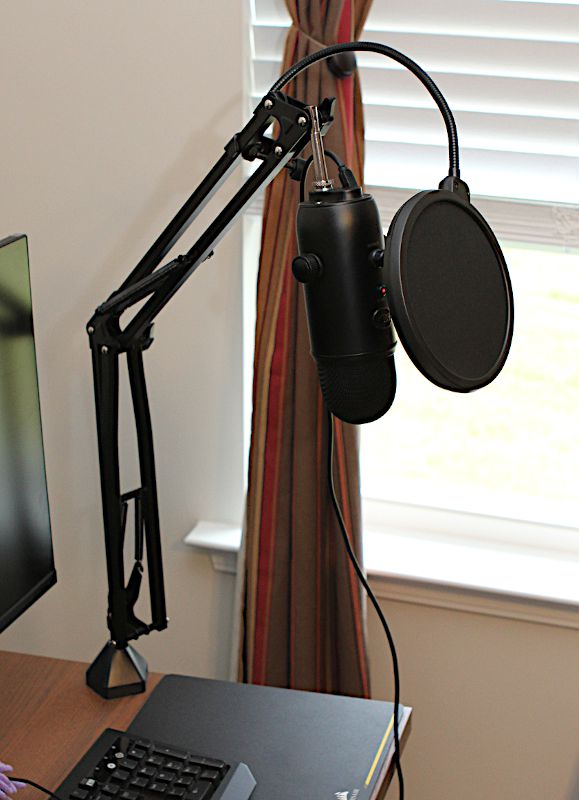
I found the TC20 to be both flexible and solid. It was flexible in that I was successfully able to adjust it such that both mics were about six inches away from my mouth. It worked with the TC-777, which was small and faced up, and with the Yeti, which was large and hung down. The TC20 was also solid in that when I tightened the clamp and twisted the screws into place, the microphones remained exactly where I put it. TONOR asserts that its mic stand can “hold your microphone in perfect position with no slippage and no drooping,” and that has certainly been my experience. In the three weeks that I’ve been testing it, TONOR’s mic stand has worked like a champ.
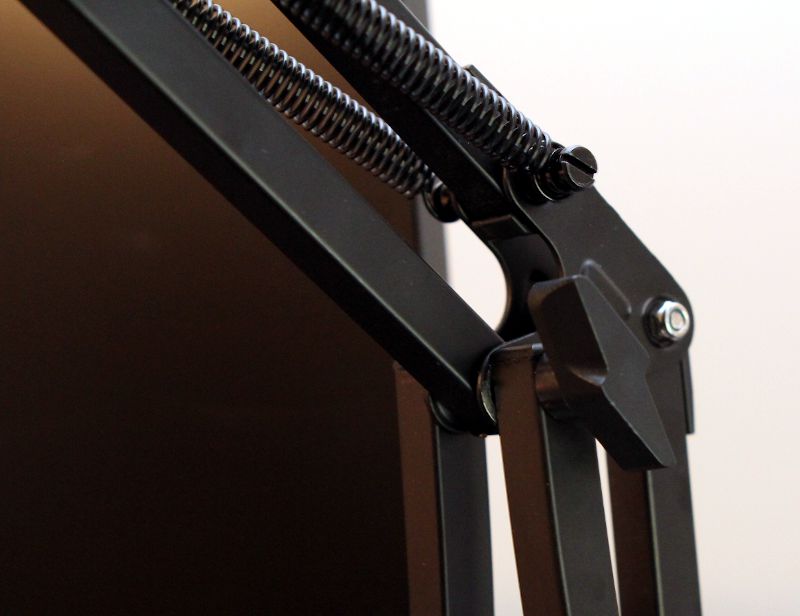
Extra Features
TONOR thoughtfully included four cable ties for cable management. The TC20 doesn’t come with a shock mount, but if you already have one, it should be compatible, so long as it works with a 3/8- or 5/8-inch attachment thread.
What I like
- Super sturdy
- Plenty flexible
- Included 5/8 adapter and pop filter
What I’d change
- Not a thing
Final thoughts
The TONOR T20 is everything that I want in a mic stand, both flexible and solid. It works ok with TONOR’s TC-777 and works great with a Blue Yeti. I’m very happy to have this mic stand as a part of my gaming setup, and I’m expecting it to be here for a long time. If you’re looking for a suspension boom arm microphone stand, then I highly recommend that you take a look at the TONOR T20.
Price: $37.99
Where to buy: TONOR’s online store or Amazon
Source: The sample for this review was provided by TONOR.



Gadgeteer Comment Policy - Please read before commenting
That’s a quote from their web site: https://www.tonormic.com/products/tonor-t20-mic-arm-stand
Hi,
Thank you for the review.
One question: can you screw the stand on a desk or wall instead of clamping it? Would be great to know since my desk has no protruding plate I could clamp it to.
Kristian
No, the stand isn’t designed to be screwed into the desk. I think the closest that you could do is to screw a piece of wood into your desk, one that hangs over the edge, then clamp the stand onto the wood. It might look kinda hacky though.
Hmm, I‘ve ordered it anyway. I will try if I could fit it in the clamp of an IKEA TERTIAL desk lamp, which even can be screwed on a wall.
I will tell you if it fits on Wednesday.
Ok, good luck!